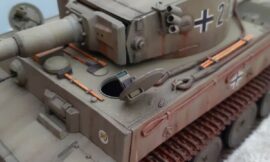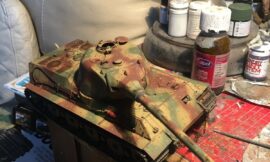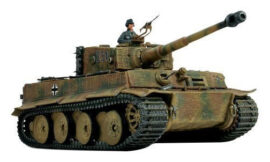The Panzer II, officially known as the Panzerkampfwagen II, was a German light tank developed in the late 1930s and extensively used during the early years of World War II. Despite its initial designation as a stopgap measure pending the development of more advanced tanks like the Panzer III and IV, the Panzer II played a crucial role in the early blitzkrieg campaigns and served in various roles throughout the war.
Development and Specifications
The development of the Panzer II began in 1934 as an interim solution to fill the gap left by the underwhelming Panzer I and the delayed Panzer III and IV. The main contractor was the German firm MAN, though other companies such as Daimler-Benz and FAMO also contributed to its production. The Panzer II was armed with a 20 mm KwK 30 L/55 autocannon and a 7.92 mm MG34 machine gun, providing it with significantly more firepower than its predecessor. The tank’s armor ranged from 5 to 30 mm, which was adequate against small arms and shrapnel but insufficient against anti-tank weapons and heavier tanks.
The Panzer II was powered by a Maybach HL62 TRM 6-cylinder gasoline engine, which allowed it to reach speeds of up to 40 km/h (25 mph) on roads and about 20 km/h (12 mph) cross-country. It had a range of approximately 200 kilometers (124 miles) on roads and 100 kilometers (62 miles) off-road. The tank weighed around 8.9 tons and had a three-man crew: a commander who also served as the gunner and loader, a driver, and a radio operator.
Operational History
The Panzer II first saw combat during the Spanish Civil War (1936-1939), where it served with the German Condor Legion. Its performance in Spain provided valuable feedback that influenced subsequent design improvements. At the outbreak of World War II, the Panzer II was the most numerous tank in the Wehrmacht, playing a prominent role in the invasions of Poland in 1939 and France in 1940.
During the Polish campaign, the Panzer II’s mobility and relatively effective armament allowed it to perform well against the largely outdated and outmatched Polish forces. In France, the Panzer II participated in the rapid and decisive blitzkrieg tactics that overwhelmed the French and British forces. However, the tank’s limitations, particularly its thin armor and relatively weak gun, became apparent when facing better-armed and armored opponents.
As the war progressed, the Panzer II became increasingly obsolete. During Operation Barbarossa, the invasion of the Soviet Union in 1941, it struggled against the Soviet T-34 and KV-1 tanks. The Wehrmacht quickly realized the need for more heavily armed and armored tanks. Consequently, the Panzer II was gradually phased out of front-line service by 1942, replaced by the Panzer III and IV.
Variants and Legacy
Despite its obsolescence as a front-line tank, the Panzer II chassis proved versatile and was adapted for various other roles. One notable variant was the Marder II, a self-propelled anti-tank gun equipped with either a captured Soviet 76.2 mm field gun or a German 75 mm Pak 40. Another variant was the Wespe, a self-propelled howitzer armed with a 105 mm leFH 18 howitzer, providing valuable artillery support.
The Panzer II also saw use as a reconnaissance vehicle, with modifications such as improved optics and communication equipment. Some variants were equipped with flamethrowers or used as training vehicles. The tank’s legacy is also marked by its influence on later German tank designs and its role in the development of blitzkrieg tactics.
Conclusion
In summary, the Panzer II was a pivotal asset for the German military during the early stages of World War II, despite being initially intended as a stopgap measure. Its involvement in key campaigns, versatility in various roles, and influence on subsequent armored vehicle designs underscore its significance in military history. While it was eventually outclassed and replaced, the Panzer II’s contributions to the Wehrmacht’s early successes cannot be understated.










